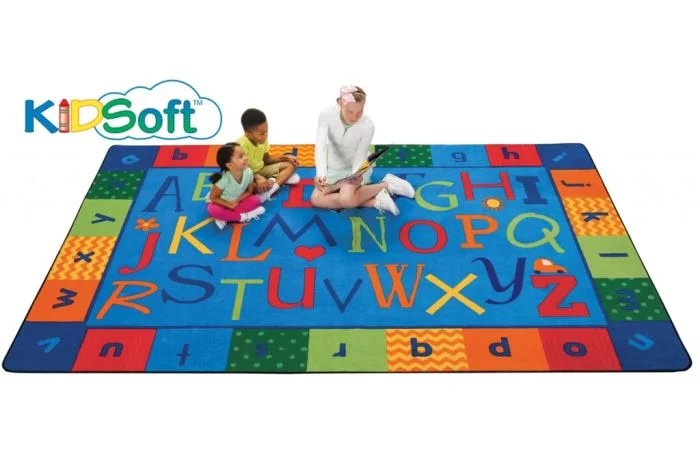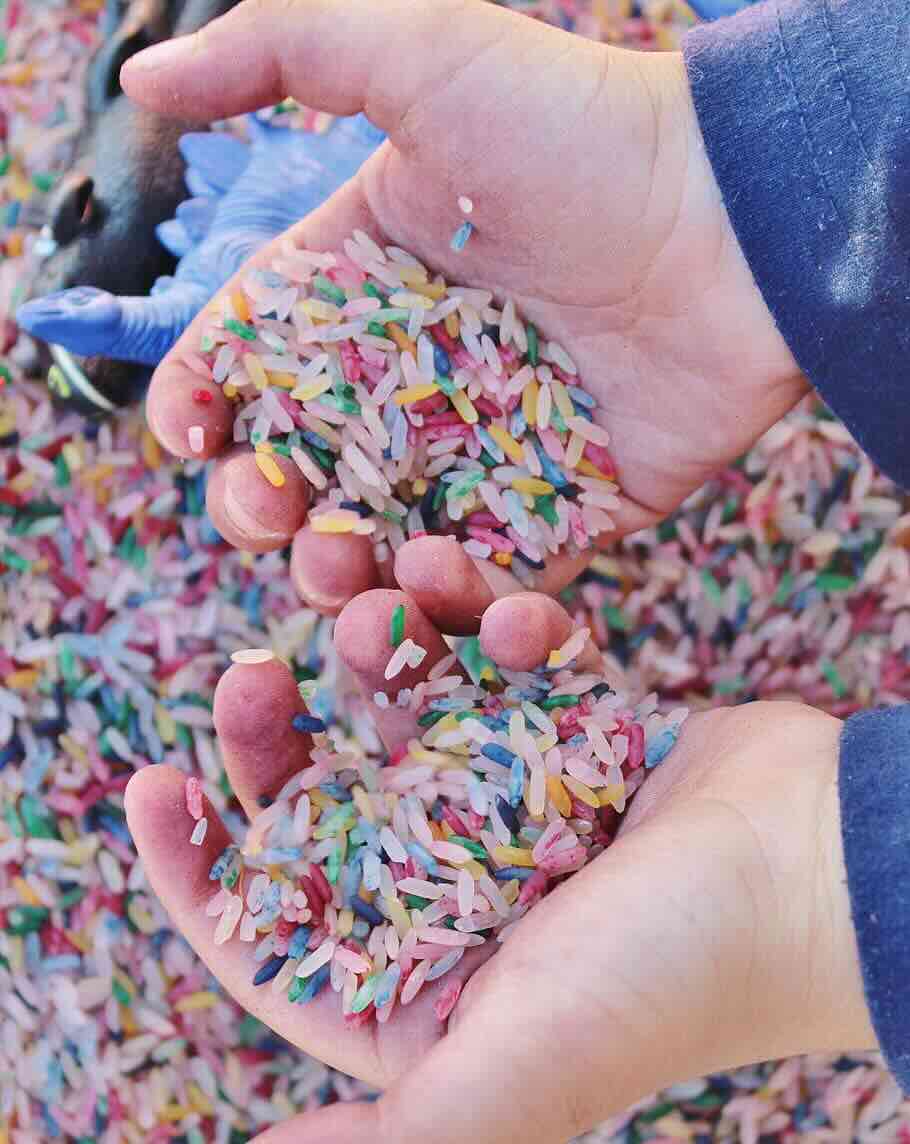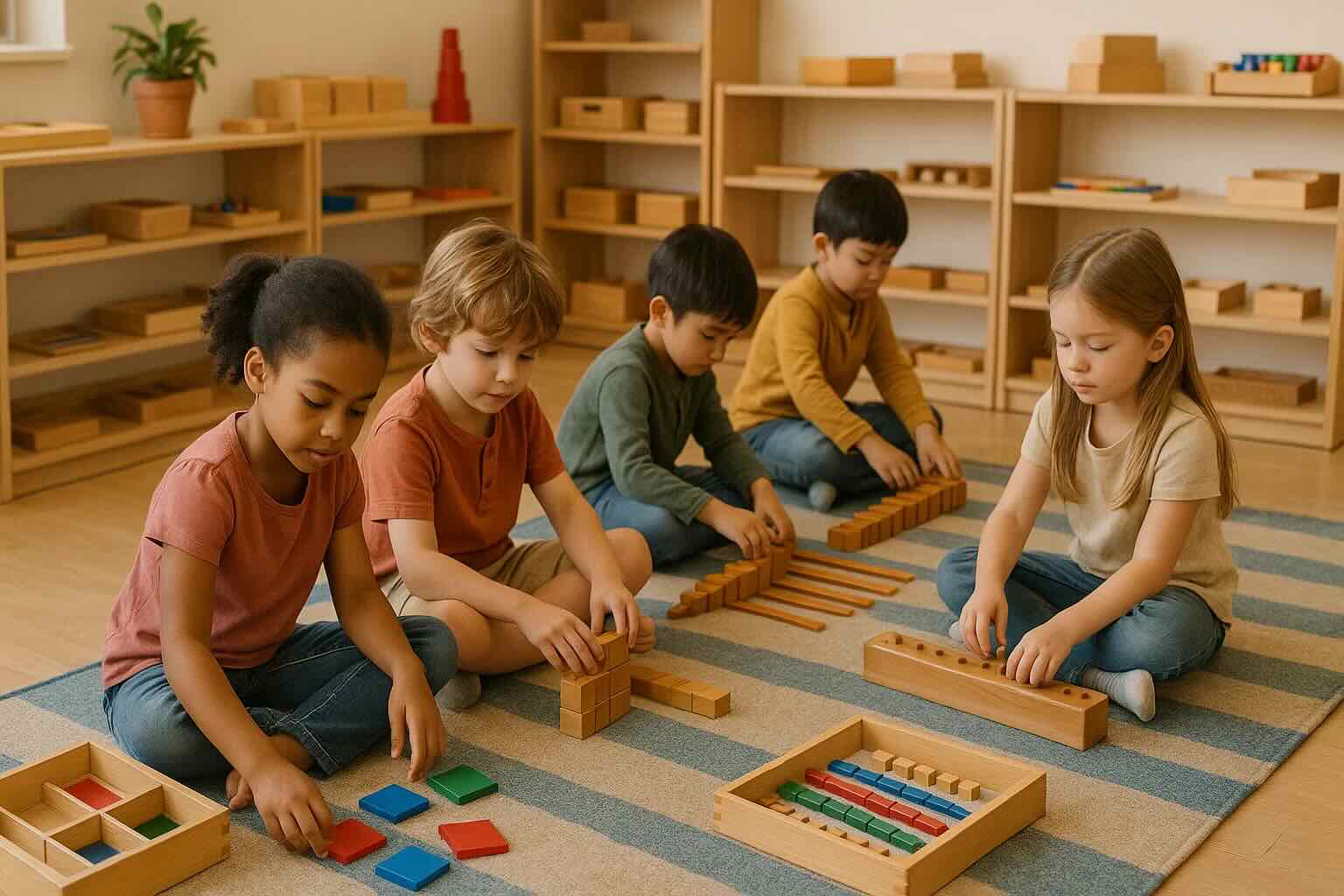Understanding Sensory Rooms
Imagine a room where the lights dim to your comfort, the sounds transport you to your favorite beach, and every object invites a new adventure for your senses. Welcome to the sensory room—a haven that feels like it's tailored just for you, especially if you're navigating the challenges of sensory processing disorders, autism, ADHD, or other neurological nuances.
Whether referred to as a sensory carpet or a sensory rug, these floor coverings offer calming textures and grounding visuals that enhance classroom environments.
If you're setting up a sensory room or calming corner, don't miss our curated selection of sensory carpets and rugs designed to support diverse sensory needs in classroom settings.
What's a Sensory Room?
Think of a sensory room, or a multisensory room, as your personal cocoon that adapts to help you feel more at ease and focused. It's a place where you can tune the world to your frequency, making learning and therapy more effective and enjoyable.
Crafted to Comfort and Stimulate
Each sensory room is a unique space filled with gadgets and goodies that engage the senses without overwhelming them:
- Visual Delights: Soft lighting and mesmerizing fiber optics ensure the lighting is just right—enough to captivate without being too stark.
- Sounds to Soothe: Imagine the gentle hum of a rainforest or the soft melodies of a distant piano—audio setups in these rooms can transport you to a world of calm.
- Touch and Explore: From squishy balls to smooth wooden blocks, every object is an invitation to touch, press, and squeeze, helping hone your motor skills and explore textures.
- A Cozy Corner: Picture sinking into a bean bag or sprawling out on a soft mat. These comfy nooks are perfect for a moment of relaxation or for those who need to feel grounded.
💡 Helpful Hint: Combine soft lighting with textured floor coverings for a multi-sensory experience that supports both overstimulated and under-stimulated students.
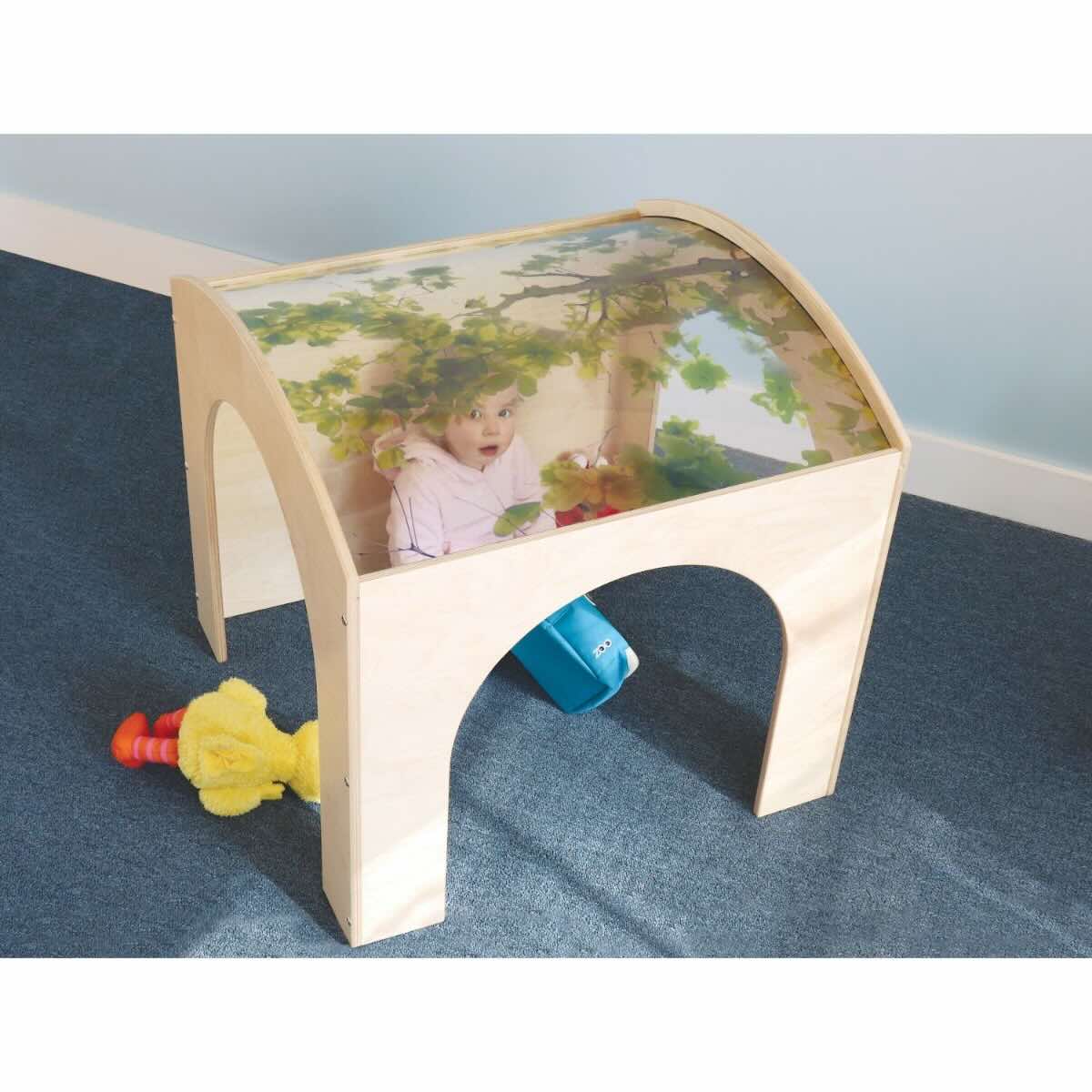 | 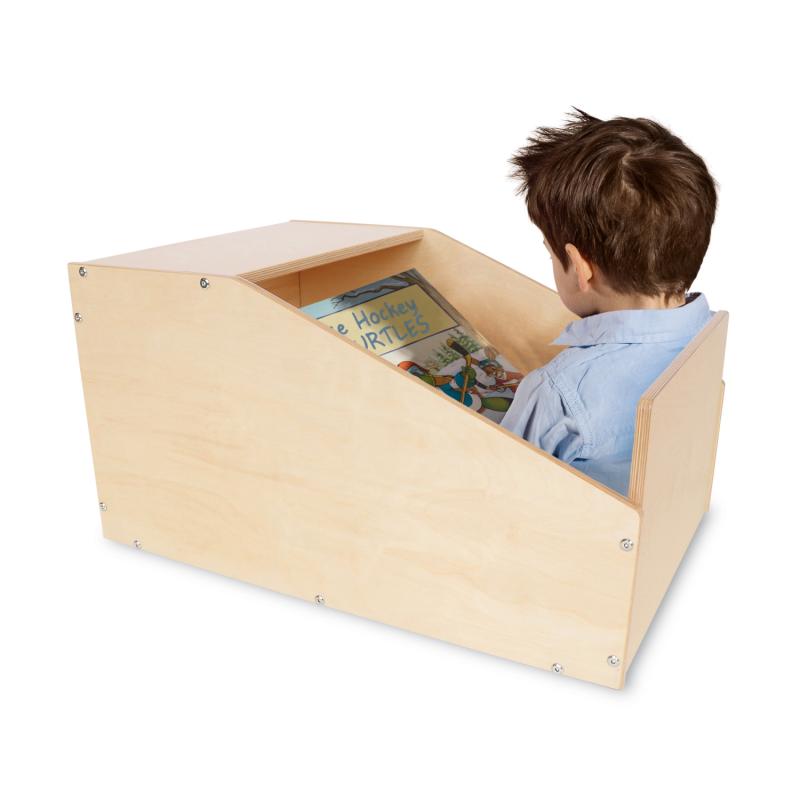 |
Why Do They Matter?
Whether you're someone who gets easily overwhelmed by the usual hustle or someone who craves more sensory feedback, these rooms offer a sanctuary. They're designed to either dial down the sensory overload or amp up the sensory inputs to meet your needs.
By stepping into a sensory room, you equip yourself with the calm or stimulation needed to face more demanding environments. It's like having a secret garden where you can recharge, refocus, and then step back into the world ready to engage on your own terms.
In essence, sensory rooms are more than just spaces; they're experiences that empower you to manage your sensory environment actively, helping you thrive both in and out of these specialized havens.
The Importance of Sensory Integration in Learning
Sensory integration, introduced by Dr. A. Jean Ayres in the 1960s, is a foundational concept in supporting learners with sensory needs. Montessori classrooms often integrate sensory-focused rugs as part of their prepared environment, recognizing that tactile experiences support natural learning processes and help children self-regulate throughout their educational journey.
- Zoning In: Helps students filter distractions and focus better.
- Skill Building: Supports fine motor skills, critical for handwriting, dressing, and more.
- Keeping Cool: Reduces meltdowns and anxiety by creating predictable sensory input.
📏 Tip: Introduce sensory breaks between learning blocks to help students stay regulated throughout the school day.
- Stress Busters: Sensory rooms give kids a safe way to decompress.
- Friendship Foster: Better regulation helps kids play and relate more easily.
- Confidence Boosts: Self-awareness of sensory needs = greater autonomy.
💬 Quick Strategy: Pair sensory input with visual schedules or calming routines to help children transition smoothly between classroom tasks.
Carpets in Sensory Rooms
Carpets are more than flooring—they are sensory surfaces that ground the space physically and emotionally.
In many classrooms, a well-chosen educational carpet serves both as a learning tool and a sensory support, offering visual structure and tactile comfort in one.
Texture
Imagine stepping onto a cloud—soft, plush, and comforting. For students who crave tactile feedback, a soft carpet can be incredibly soothing.
Color
Colors can shift moods. Blues and greens help calm; bright tones like yellow can energize. Choose according to the student's needs.
Material
Natural fibers like wool are hypoallergenic but harder to clean. Synthetic fibers are durable and easy to maintain for high-traffic rooms.
💡 Design Tip: A United States of America rug can double as both an educational map and a visually calming centerpiece in a sensory space.
Benefits of Sensory Rugs and Carpets in Classrooms
Sensory rugs and carpets offer more than just comfort—they provide tactile stimulation, help define calming zones, and reduce noise in busy classroom environments. For students with sensory processing needs, these textured surfaces can improve focus, emotional regulation, and spatial awareness throughout the school day.
Design Considerations for Carpets in Sensory Rooms
What to Think About When Choosing Your Carpet
Safety First
Opt for slip-resistant options with safe padding underneath. Ensure the carpet meets Class 1 Fire Rate Coding standards.

Keeping It Clean
Choose materials that handle spills and scrubbing without degrading.
🌟 Explore our sensory carpet collection: Discover durable, textured sensory rugs and carpets for classrooms designed to support emotional regulation and sensory integration in inclusive learning spaces. All rugs ship free within the continental U.S.
Built to Last
Durability is a must. Look for tough, tightly woven options.
Gentle and Non-toxic
Low-VOC, minimally treated fibers are best for sensitive students.
A Feast for the Senses
Textures should feel good. Patterns and colors should match sensory goals—soothing or energizing as needed.
Real-Life Magic Carpets: Stories from Schools
The Cozy Corner Elementary
One school added a soft ocean-colored carpet and saw calmer, more focused students.
Energize High
Another opted for a bold, patterned carpet that's both vibrant and easy to clean. Students love the energy boost it provides.
Handy Tips for Educators and Designers
- Prioritize the Safe Choice: All rugs should be slip-resistant and meet fire codes.
- Look for Long-Lasting and Low-Maintenance: Avoid rugs that need constant care. Choose those made for school life.
- Choose Carpets That Care: Hypoallergenic options make rooms inclusive for everyone.
- Colors and Textures That Teach and Soothe: Design with intention—color and feel matter.
- Make Learning Fun and Functional: Use educational designs that also serve as teaching tools.
For comprehensive guidance on selecting the right carpet for your inclusive classroom or sensory space, see our full classroom carpet guide for detailed buying help covering materials, safety standards, themes, and sizing considerations.
Explore Our Range of Children Carpets
Frequently Asked Questions
What is the role of carpets in sensory rooms?
Carpets provide tactile input, visual cues, and emotional grounding. Their texture and color can help regulate sensory input, offering comfort and calm or gentle stimulation as needed.
What type of carpet is best for children with sensory needs?
Soft, low-VOC carpets with non-slip backing and soothing colors are ideal. Look for tightly woven, hypoallergenic materials that are durable and easy to clean.
How do carpets help with emotional regulation in schools?
Carpets can create safe, cozy zones like reading nooks or quiet corners. These spaces help children decompress, focus, and feel grounded during overwhelming moments.
Are carpets safe for high-traffic classrooms?
Yes, if they are fire-rated, slip-resistant, and made from school-safe materials. Many modern classroom rugs are built to handle daily use while maintaining sensory benefits.
Can a carpet serve both educational and sensory functions?
Absolutely. Carpets like the United States of America rug combine tactile comfort with educational value, making them both functional and stimulating.





